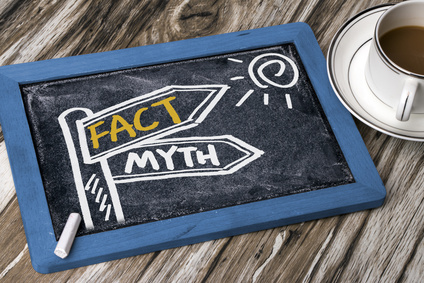Getting financing from a bank is not an easy task, so people look elsewhere to get loans. Some people use personal loans as an option to get financing. A few scary stories are floating around about getting a personal loan. Your parents warn you about taking such risks, but are some of those stories exaggerated? Let us examine a few myths about personal loans.
1. Your Credit Score Has to Be High
You can still get a loan with a low credit score, but the interest rates are not as favorable as with a higher score. For example, if you take out a $10,000 loan, and you pay it back in four years, you will end up paying 30.02% or a total of $17,289. On the other hand, if your credit score is high, and you take out the same amount of loan and pay it back in four years, you interest rate would be 9.66% or a total of $12,096. The difference between the two is $5,193.
 The best thing to do is to shop around for the best rate possible. Search the web and compare rates. There are sites dedicated to giving you the best rates possible. You will get the opportunity to do the calculations and then shop around for the best rates.
The best thing to do is to shop around for the best rate possible. Search the web and compare rates. There are sites dedicated to giving you the best rates possible. You will get the opportunity to do the calculations and then shop around for the best rates.
Try building up your credit before applying for a loan. It will save you money in the long run. You can also make the effort to pay off your debt. That would contribute to getting more favorable rates. Another great tip is to pay your monthly bills on time. This will also improve your credit score.
2. The Rates Are the Same for All Lenders
All lenders do not charge the same rates. It is also not the best advice to pay attention to just the interest rate. Some banks offer low rates but add all types of fees to the loan. When shopping for a loan, pay attention to terms such as “Origination Fees.” Banks could charge anywhere from one percent to five percent of the total loan.
Additionally, look out for “Return Payment Fee.” This fee gets incurred if you set up an automatic payment schedule. If your bank account does not have sufficient funds to cover it, your payment will get rejected, and you will incur a fee. You will be paying two fees. Your bank will charge a fee, and your lender will also charge a fee.
You may also want to look out for “Prepayment Penalty.” Some banks will penalize you for paying off your loan too early. You should ask the lender about the total amount that is repayable.
3. Lenders Use Your House as Collateral
Personal loans are unsecured, so they do not need collateral. On the other hand, if the loan is secured, you will need to put up collateral. It could be anything of value such as your car, house, or boat. If you are unable to pay off your loan, the lender will have means of recouping their loss.
The interest rates are low on secured loans, so they are less risky. However, the rates are much higher on an unsecured loan. That is why you do not need collateral.
4. Personal Loans Are Priced Higher than Other Loans
This is not true. If you take out a Payday Loan, the rates are much higher than that of a personal loan. You repay it when you get your next paycheck, but at a steep price.
You can also get a better rate on a personal loan than that of a credit card. You can save over $1,000 in interest with a personal loan compared to that of a credit card. For example, you can get a personal loan at a rate of 16 percent for a $10,000 loan. However, for the same amount of credit at $10,000, you could pay 20 percent interest on a credit card.
Another difference between the personal loan and the credit card is that you will get your money up front with a personal loan. You can also negotiate a better deal.
In conclusion, do some research before taking anyone’s word for it when it comes to personal loans. Here are some myths that are floating around: Your credit score has to be high. The rates are the same for all lenders. Lenders use your house as collateral. Personal loans get priced greater than other loans.

